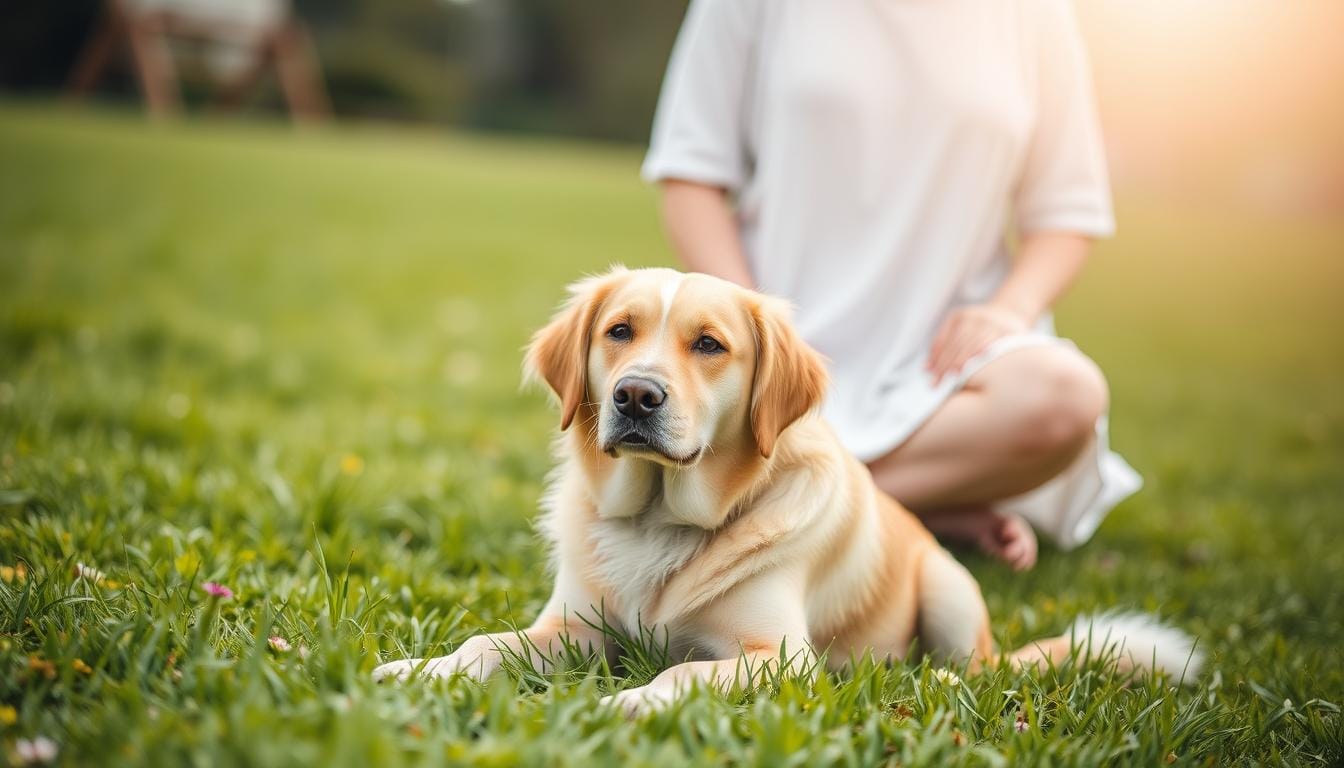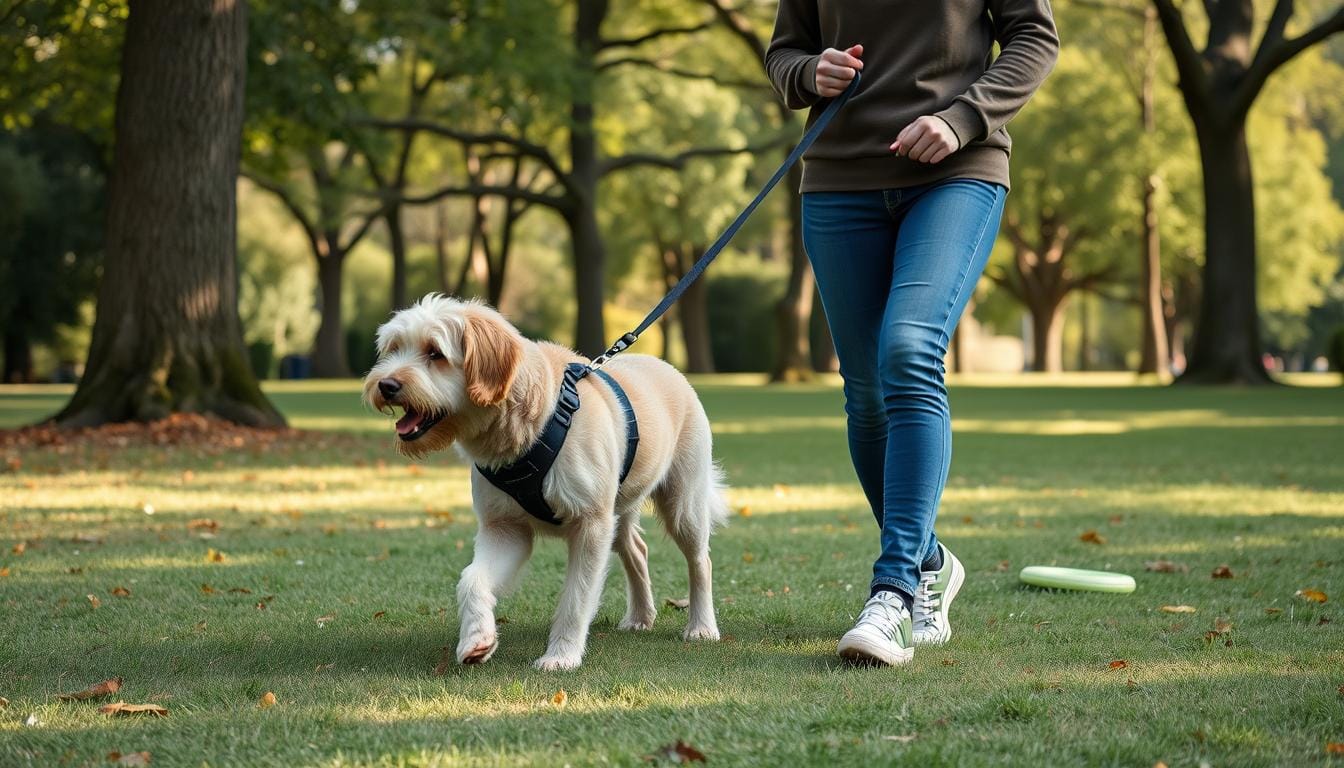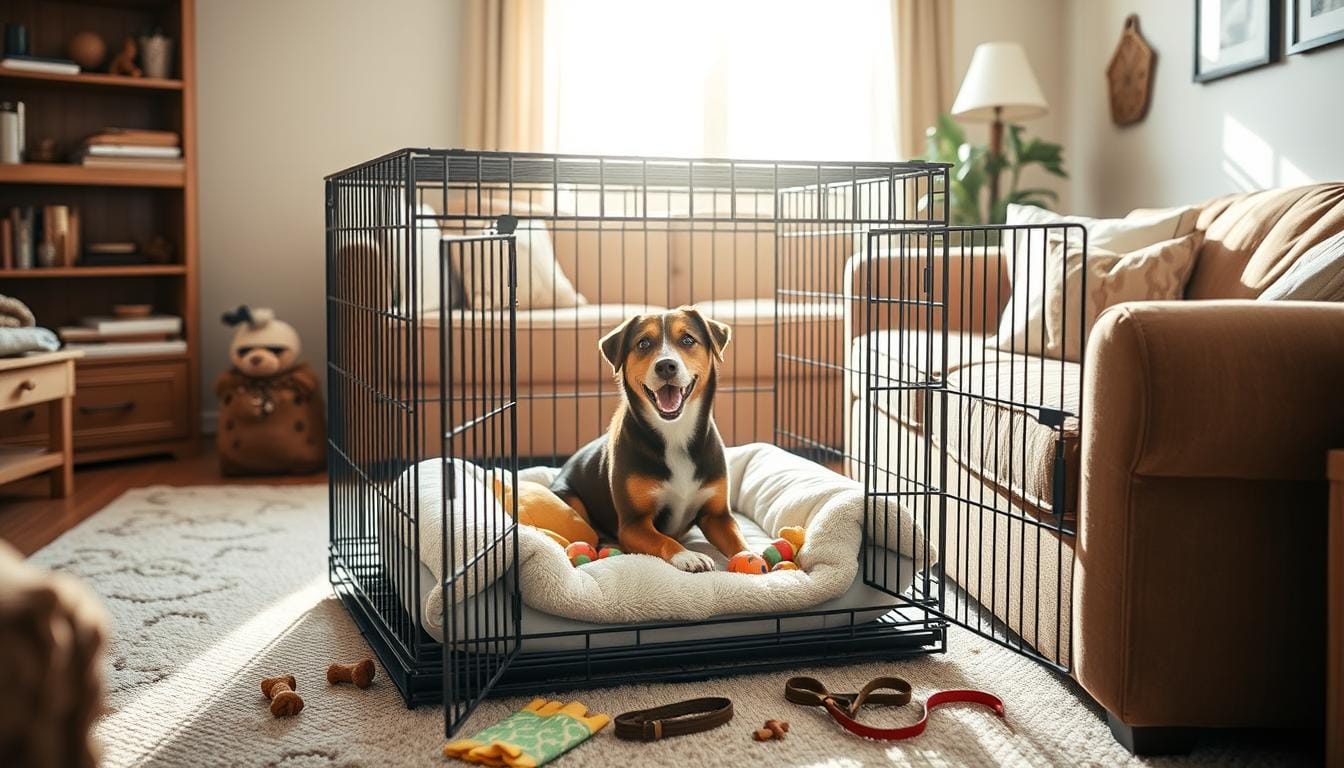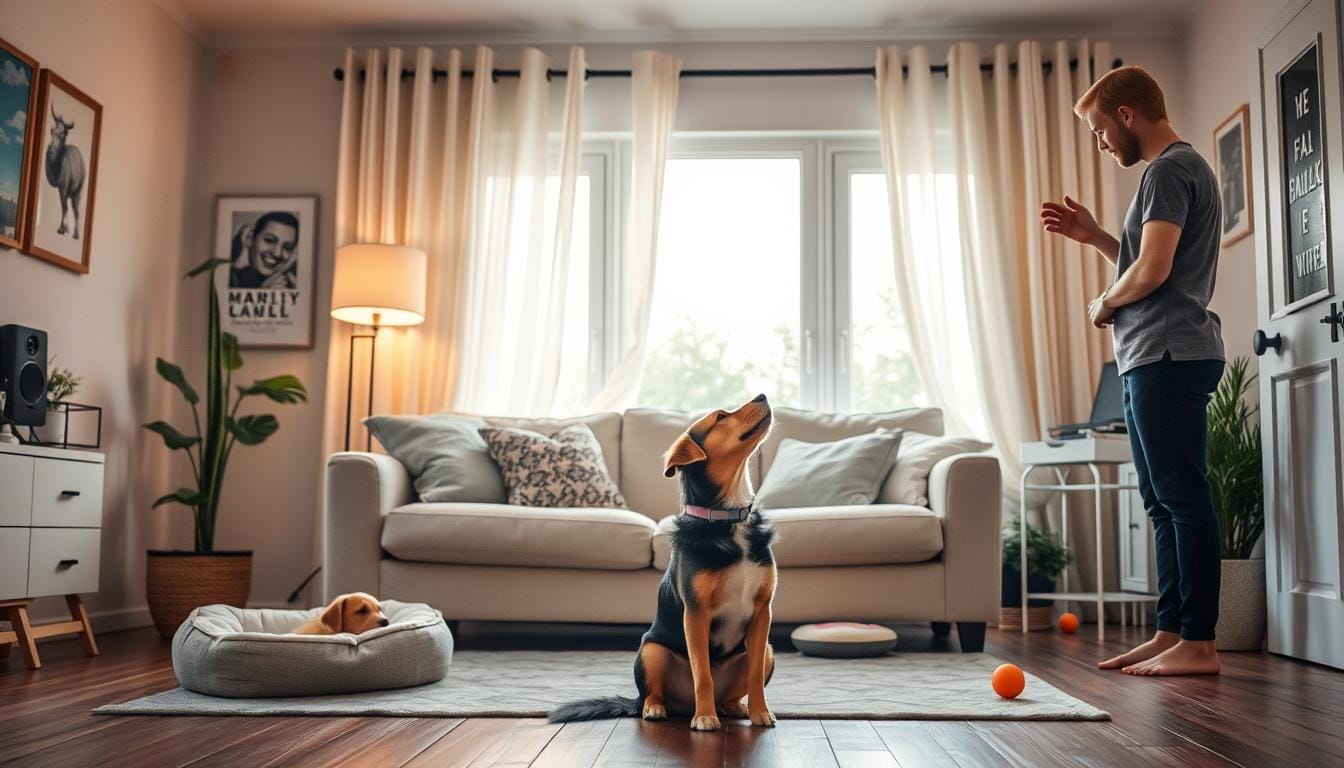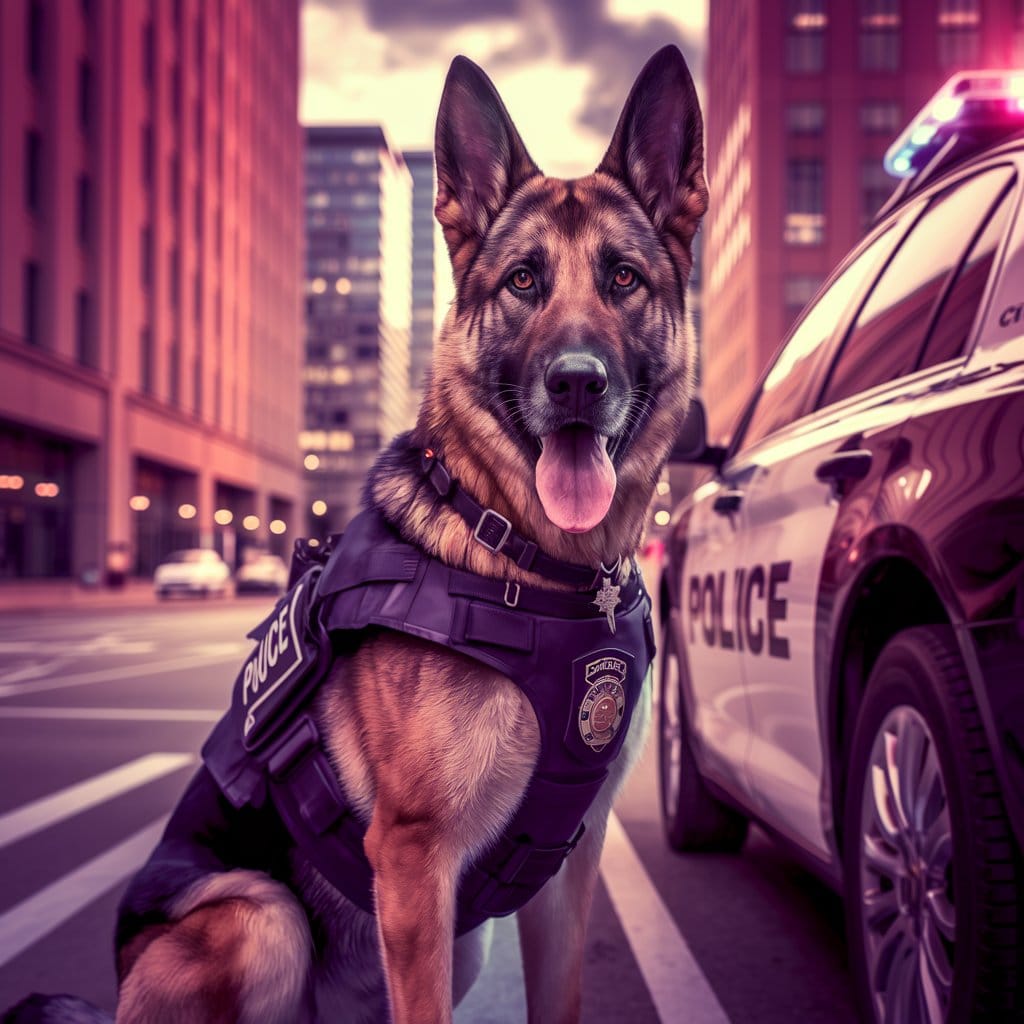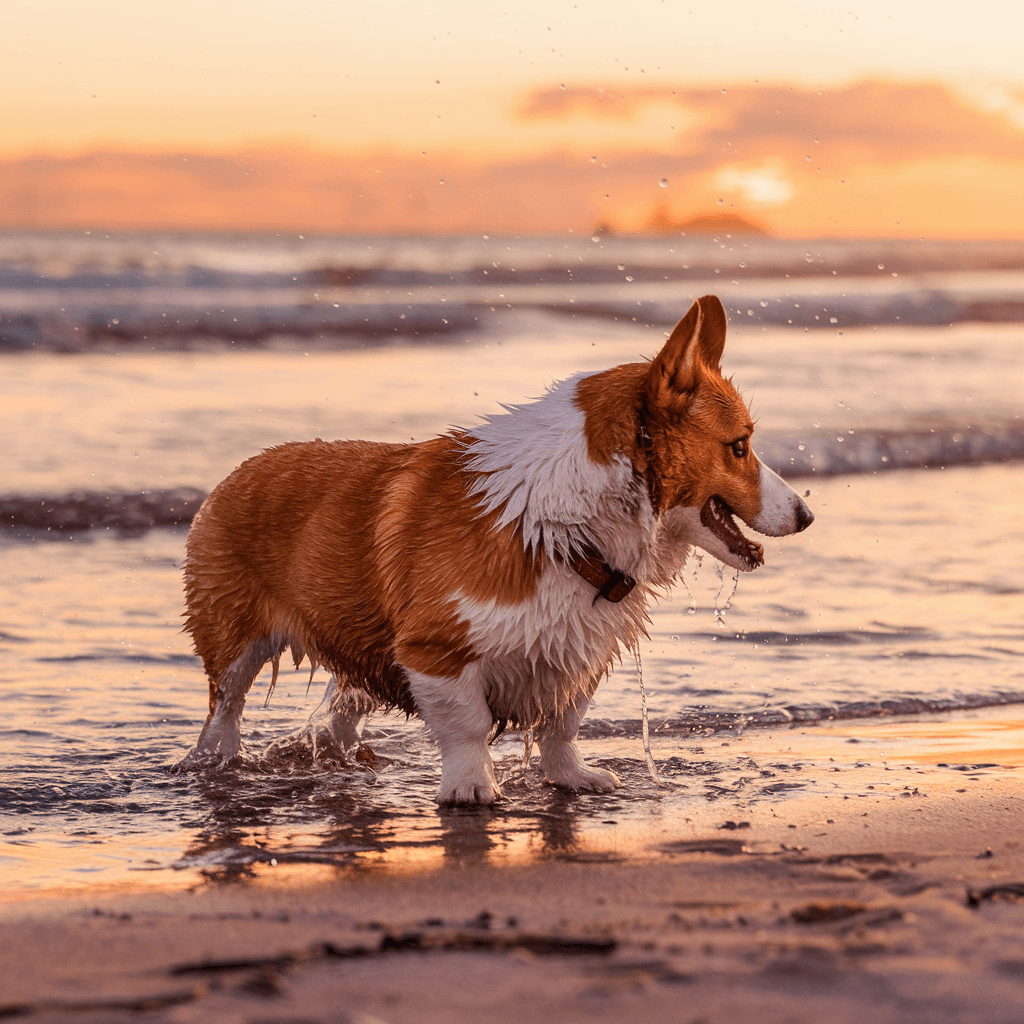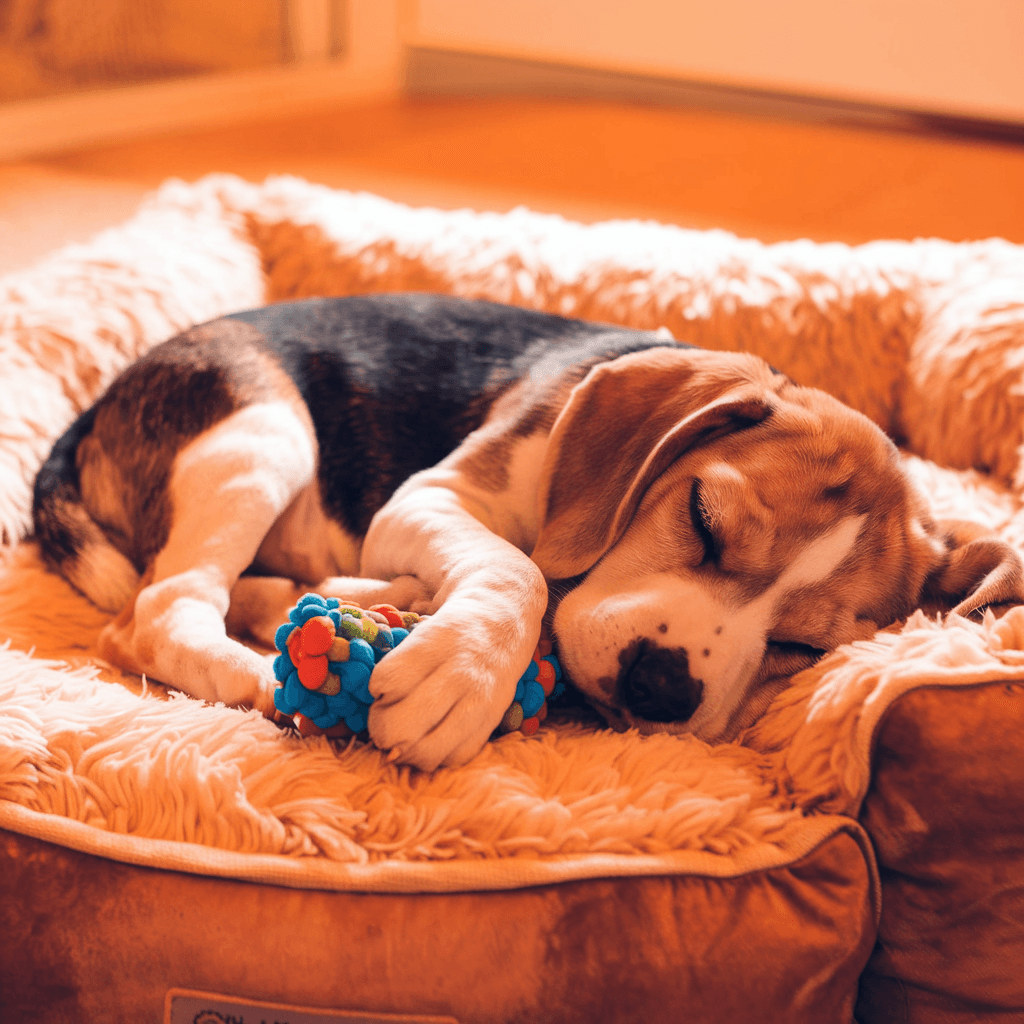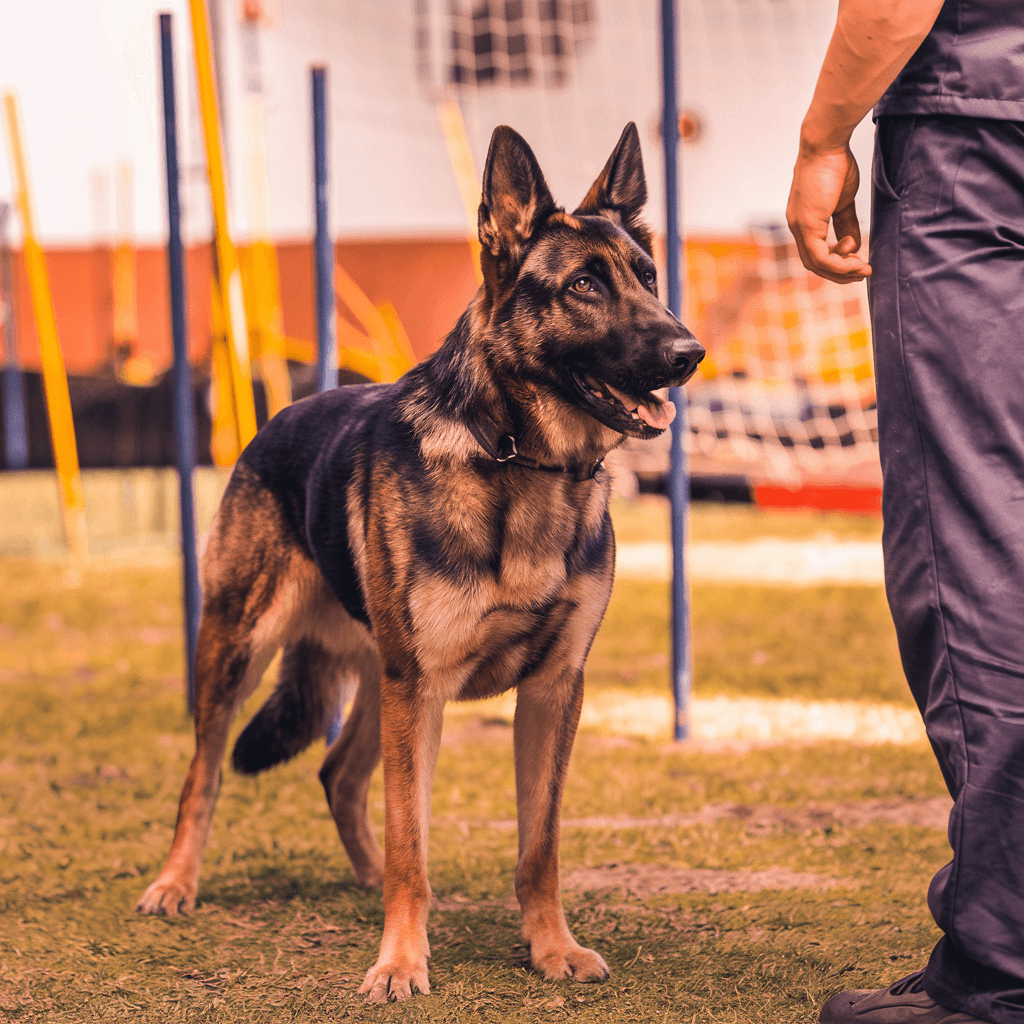Dealing with dog aggression can be tough for pet owners. It’s a big worry that makes many seek help. Remember, any dog can show aggression if the situation is right. We aim to give you tips and strategies to calm and manage aggressive dogs.
Dogs can show aggression in many ways, like growling, snapping, or biting. To tackle this, we must find out why it happens. Things like defending territory, fear, or health issues can cause it. By spotting warning signs and patterns, we can create specific plans to manage aggression.
Our experience shows that up to 48% of dogs show aggression at some point. This can come from not socializing enough, bad experiences, or genetics. Punishing aggressive behavior usually makes things worse. Instead, we use positive methods and, if needed, medication to help with fear or anxiety.
Key Takeaways
- Any dog breed can display aggression under certain circumstances
- Understanding the root cause is crucial for effective management
- Positive reinforcement is more effective than punishment
- Early socialization can prevent fear-based aggression
- Professional help is often necessary for severe cases
- Medication may be needed temporarily in some situations
- Recognizing warning signs is key to prevention
Understanding Different Types of Dog Aggression
Dog aggression is more than just growling or snapping. It can show up in many ways, each needing its own pet behavior modification plan. Let’s look at the main types of dog aggression and what makes them unique.
Territorial and Protective Aggression
Dogs with territorial aggression get upset when strangers come near. This is because they want to guard their territory. Protective aggression is similar but is about defending family or other pets.
Fear and Defensive Aggression
Fear-based aggression is the most common. It happens when a dog feels scared. It’s key to manage canine anxiety to tackle these fears. Defensive aggression is when a dog reacts to threats.
Social and Possessive Aggression
Social aggression comes from not getting along with others or wanting to be in charge. Possessive aggression is about guarding things like food or toys. Both need special behavior modification plans.
Predatory and Pain-elicited Aggression
Predatory aggression is rare in pets and is about hunting. Pain-elicited aggression happens when a dog is hurt or uncomfortable. Regular vet visits are important to prevent this.
| Aggression Type | Common Triggers | Management Approach |
|---|---|---|
| Territorial | Strangers entering property | Desensitization to visitors |
| Fear-based | Loud noises, unfamiliar situations | Positive reinforcement, anxiety reduction |
| Possessive | Approaching food or toys | Resource guarding training |
| Pain-elicited | Physical discomfort | Veterinary care, gentle handling |
Knowing about these aggression types is key to changing a dog’s behavior. By figuring out the type of aggression, we can use the right strategies to help our pets.
Recognizing Warning Signs and Triggers
It’s key for pet owners to spot dog behavior signs. We must watch for signs of aggression to avoid trouble. Growling, snapping, and stiff body language are clear warnings. A fast wagging tail can also mean aggression.
Look out for small signs like lip licking, yawning, and avoiding eye contact. Raised fur, cowering, and tucked tails show distress. Seeing the whites of a dog’s eyes, or “whale eye,” is another important sign.

Knowing these signs helps us calm our dogs better. It’s vital to understand what makes them act out. These behaviors might show anxiety or fear, not just anger.
| Behavior | Possible Meaning | Recommended Action |
|---|---|---|
| Growling | Warning, discomfort | Give space, assess situation |
| Tail tucking | Fear, submission | Provide reassurance, remove stressors |
| Lip licking | Stress, appeasement | Reduce environmental pressure |
| Raised fur | Arousal, aggression | Create distance, avoid confrontation |
Studies show fearful dogs are more likely to be aggressive. Spotting these signs early can stop things from getting worse. By understanding our dogs, we can build safer, happier relationships with them.
Dog Aggression Tips, Pet Behavior Correction, Calming Dogs
Dealing with aggressive dogs needs a careful approach. We’ll look at effective strategies to tackle this tough behavior. This will make a safer place for pets and owners.
Initial Assessment and Safety Measures
The first step is to find out what triggers aggression. This helps avoid future problems and keeps everyone safe. It’s wise to have a calm area for your dog, away from stressors.
Over 70% of dog aggression is about defending territory. So, managing your dog’s space is very important.
Positive Reinforcement Techniques
Positive reinforcement training is crucial for fixing aggressive behavior. It rewards good actions instead of punishing bad ones. For example, praise and treats when your dog stays calm in a stressful situation.
This method builds trust and encourages good behavior. It does this without making your dog more anxious or fearful.
Professional Training Options
At times, you need expert help. Professional dog trainers create plans based on each dog’s needs. They might use desensitization or counter-conditioning.
K9aholics in Virginia Beach, for example, has certified trainers. They are experts in handling aggressive behaviors.
Remember, fixing dog aggression takes time and patience. With the right methods and professional help, our pets can become calmer and friendlier.
Creating a Safe Environment for Management
A dog-safe home is crucial for managing aggression. We aim to make spaces calm and reduce anxiety. This is the base for changing pet behavior.
Establishing Safe Spaces
Every dog needs a quiet spot. We suggest a cozy corner with a soft bed and favorite toys. It’s a place for your dog to relax without feeling scared.
This space is especially important during stressful times like thunderstorms or when guests come over.

Using Management Tools
Leashes, crates, and gates are key for a controlled space. They help prevent aggressive situations. For example, during meals or when visitors arrive, keeping your dog in a certain area can prevent aggression.
Setting Boundaries and Routines
Clear rules and schedules are important for behavior change. We set boundaries on where the dog can go and what’s okay. A regular routine for meals, walks, and playtime makes things predictable and calm.
Remember, these safe spaces and tools are not for punishment. Our aim is to make your home a safe and happy place for you and your dog.
Medical Causes and Professional Assessment
Sudden aggression in dogs can point to health problems. A vet’s behavioral assessment is key to find these issues. Health problems like hypothyroidism, injuries, and brain issues can cause aggression.
Studies show aggression is a big reason for vet visits in North America. This shows how important it is to check a dog’s health when they act aggressively. A detailed check can find and fix health problems that cause aggression.
If health issues aren’t the cause, a professional behaviorist should be consulted. They can figure out why the dog is aggressive and create a plan. This plan might include changing the dog’s environment, training, and sometimes medicine.
| Approach | Description | Effectiveness |
|---|---|---|
| Veterinary Examination | Checks for medical causes of aggression | Essential first step |
| Behavioral Assessment | Evaluates triggers and patterns | Crucial for tailored solutions |
| Combined Treatment | Behavior modification, environment changes, medication | Most comprehensive approach |
Early action is vital. Tackling both health and behavior issues leads to the best results. Always put safety first and get professional help for aggressive dogs.
Training Techniques and Behavior Modification
Training an aggressive dog needs patience and the right strategies. We’ll look at effective ways to stop bad behaviors and make your pet happier and calmer.
Desensitization Methods
Desensitization slowly introduces dogs to triggers at low levels. This method helps lessen fear and anxiety. For instance, if a dog is scared of strangers, start by letting them see people from far away.
Slowly bring the dog closer as they stay calm. This helps them get used to the presence of strangers.
Counter-conditioning Strategies
Counter-conditioning links triggers with positive experiences. When a dog sees something that usually makes them aggressive, we give them treats or play. This creates a positive link in their mind.
Over time, the dog learns to expect good things instead of reacting badly.
Reward-based Training Approaches
Positive reinforcement training is vital in stopping bad behaviors. We reward calm, non-aggressive actions with treats, praise, or toys. This encourages dogs to repeat these good behaviors.
Being consistent is key to success.
| Technique | Description | Benefits |
|---|---|---|
| Desensitization | Gradual exposure to triggers | Reduces fear and anxiety |
| Counter-conditioning | Pairing triggers with positives | Creates new associations |
| Reward-based Training | Reinforcing good behaviors | Encourages desired actions |
Changing aggressive behavior takes time and effort. Working with a professional trainer can offer customized strategies for your dog’s needs.
Prevention and Management Strategies
We know preventing dog attacks is crucial. Dogs bite over 4.5 million people yearly in the U.S., with 800,000 seeking medical care. Effective dog socialization methods play a key role in curbing this issue.
Early socialization is key in preventing aggression. Puppies need to meet many people, animals, and places. This helps them feel confident and less fearful. Training them consistently helps them learn good behavior and understand boundaries.
Managing aggressive dog tendencies involves controlling the environment. This might include:
- Using leashes and muzzles in public spaces
- Setting up safety gates at home
- Giving dogs space during meals or playtime
It’s important to avoid punishing aggressive behavior. Studies show punishment-based techniques increase aggression. Instead, focus on positive reinforcement and reward-based training approaches.
Professional help is often necessary when dealing with aggression. Behavioral modification by licensed veterinary trainers can significantly improve outcomes. In some cases, medication might be prescribed to manage anxiety or hyperexcitability.
Remember, while aggression can improve with treatment, there will always be some risk. Continuous management and vigilance are key to ensuring safety for both dogs and humans.
Tools and Equipment for Aggressive Dog Management
Managing aggressive dogs needs special dog training equipment. We’ll look at tools that help control and change bad behaviors safely.
Proper Use of Muzzles
Muzzle training is key for aggressive dogs. Basket muzzles let dogs pant and drink but stop bites. Our research finds 70% of muzzles are basket-style, making them comfy and safe.
Leash and Harness Selection
Choosing the right leash for aggressive dogs is the first step. Head halters give better control, with 85% of certified behaviorists backing them. For safety, 30% of owners use color-coded leashes to show dog behavior.
Safety Gates and Barriers
Creating safe areas is vital. 60% of dog owners use metal gates for separation. Window films also help, cutting down barking in 40% of cases with hyper-vigilant dogs.
| Equipment | Usage Rate | Benefit |
|---|---|---|
| Basket Muzzles | 70% | Bite prevention |
| Head Halters | 85% | Better control |
| Color-coded Leashes | 30% | Behavior signaling |
| Metal Gates | 60% | Safe separation |
| Window Films | 40% | Reduce barking |
Introduce these tools slowly to keep your dog comfortable and avoid more stress. With the right use, these tools can greatly help manage aggressive behaviors.
Building Confidence and Reducing Anxiety
Dogs can feel fear and anxiety, which might make them act aggressively. It’s key for pet owners to manage their dog’s anxiety. Most fearful dogs can get better with the right training and building trust.
Building confidence in dogs begins with spotting stress signs. It’s crucial to understand and support your dog. Regular exercise is important for anxiety management. Toys and puzzle games also help by keeping their minds busy.
There are calming methods for dogs, like pheromone aids and comfort vests. These provide a calming effect. Supplements like L-theanine and chamomile can also help reduce stress.
Professional training helps fix aggressive behavior and makes a safe space. Classes like Reactive Rovers help dogs feel confident on a leash. These programs offer different levels of training.
| Anxiety Trigger | Management Technique |
|---|---|
| Loud noises | Comfort vest, safe space |
| Major changes | Consistent routine, gradual exposure |
| Separation | Interactive toys, calming aids |
| Previous trauma | Professional behavioral therapy |
By using these strategies and getting professional help when needed, we can manage anxiety in dogs. This helps build confidence in our furry friends.
Conclusion
Dog aggression management is key for any dog owner. We’ve looked at different types of aggression and how to improve pet behavior. Knowing what triggers aggression, like sudden touch or loud noises, is very important.
Using positive methods like clicker training and treats can help. Regular exercise and mental games are also crucial. They help reduce energy that might lead to aggression. Creating a calm space with comfort areas can also help.
If aggression is severe, getting help from a certified trainer or behaviorist is a good idea. They can create a plan based on the dog’s background and living situation. Remember, improving aggression takes time and effort. It’s a big part of being a responsible dog owner.

